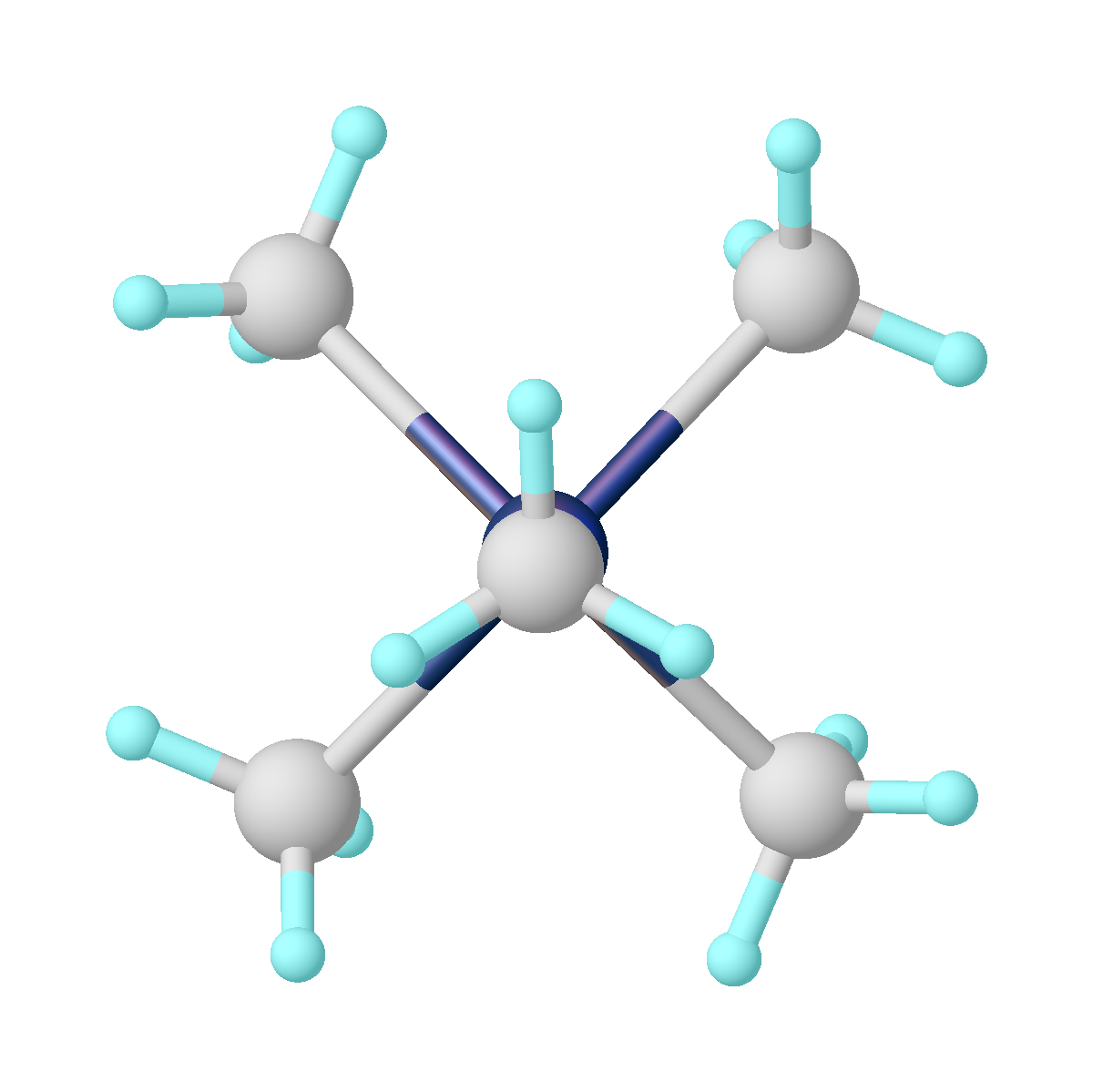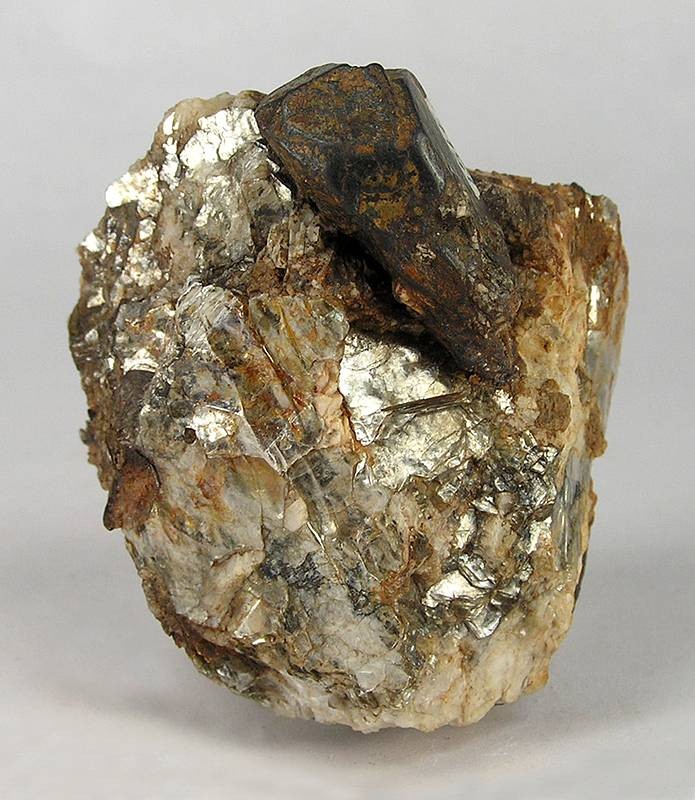|
Columbite
Columbite, also called niobite, niobite-tantalite and columbate [], is a black mineral group that is an ore of niobium. It has a submetallic Lustre (mineralogy), luster and a high density and is a niobate of iron and manganese. This mineral group was first found in Haddam, Connecticut, in the United States. It forms a series with the tantalum-dominant analogue ferrotantalite and one with the manganese-dominant analogue manganocolumbite. The iron-rich member of the columbite group is ferrocolumbite. Some tin and tungsten may be present in the mineral. Yttrocolumbite is the yttrium-rich columbite with the formula . It is a radioactive mineral found in Mozambique. Columbite has the same composition and crystal symmetry (orthorhombic) as tantalite. In fact, the two are often grouped together as a semi-singular mineral series called columbite-tantalite or coltan in many mineral guides. However, tantalite has a much greater specific gravity than columbite, more than 8.0 compared to col ... [...More Info...] [...Related Items...] OR: [Wikipedia] [Google] [Baidu] |
List Of Minerals
This is a list of minerals for which there are articles on Wikipedia. Minerals are distinguished by various chemical and physical properties. Differences in chemical composition and crystal structure distinguish the various ''species''. Within a mineral species there may be variation in physical properties or minor amounts of impurities that are recognized by mineralogists or wider society as a mineral ''variety''. Mineral variety names are listed after the valid minerals for each letter. For a more complete listing of all mineral names, see List of minerals recognized by the International Mineralogical Association. A :Varieties that are not valid species: * Adamantine spar (variety of corundum) *Agate (variety of chalcedony and quartz) *Alabaster (variety of gypsum) *Alexandrite (variety of chrysoberyl) * Allingite (synonym of amber) *Alum *Amazonite (variety of microcline) *Amethyst (purple variety of quartz) *Ametrine (variety of quartz) *Ammolite (organic; also a ge ... [...More Info...] [...Related Items...] OR: [Wikipedia] [Google] [Baidu] |
Coltan
Coltan (short for columbite–tantalites and known industrially as tantalite) is a dull black metallic ore from which the elements niobium and tantalum are extracted. The niobium-dominant mineral in coltan is columbite (after niobium's original American name ''columbium''), and the tantalum-dominant mineral is the tantalite. Tantalum from coltan is used to manufacture tantalum capacitors which are used for mobile phones, personal computers, automotive electronics, and cameras. Coltan mining is widespread in the Democratic Republic of Congo. Production and supply Approximately 71% of the global tantalum supply in 2008 was newly mined, 20% was from recycling, and the remainder was from tin slag and inventory. Tantalum minerals are mined in the Democratic Republic of the Congo, Colombia, Rwanda, Australia, Brazil, China, Ethiopia, and Mozambique. Tantalum is also produced in Thailand and Malaysia as a by-product of tin mining and smelting. Potential future mines, in des ... [...More Info...] [...Related Items...] OR: [Wikipedia] [Google] [Baidu] |
Niobium
Niobium is a chemical element with chemical symbol Nb (formerly columbium, Cb) and atomic number 41. It is a light grey, crystalline, and ductile transition metal. Pure niobium has a Mohs hardness rating similar to pure titanium, and it has similar ductility to iron. Niobium oxidizes in Earth's atmosphere very slowly, hence its application in jewelry as a hypoallergenic alternative to nickel. Niobium is often found in the minerals pyrochlore and columbite, hence the former name "columbium". Its name comes from Greek mythology: Niobe, daughter of Tantalus, the namesake of tantalum. The name reflects the great similarity between the two elements in their physical and chemical properties, which makes them difficult to distinguish. English chemist Charles Hatchett reported a new element similar to tantalum in 1801 and named it columbium. In 1809, English chemist William Hyde Wollaston wrongly concluded that tantalum and columbium were identical. German chemist Heinrich ... [...More Info...] [...Related Items...] OR: [Wikipedia] [Google] [Baidu] |
Tantalum
Tantalum is a chemical element with the symbol Ta and atomic number 73. Previously known as ''tantalium'', it is named after Tantalus, a villain in Greek mythology. Tantalum is a very hard, ductile, lustrous, blue-gray transition metal that is highly corrosion-resistant. It is part of the refractory metals group, which are widely used as components of strong high-melting-point alloys. It is a group 5 element, along with vanadium and niobium, and it always occurs in geologic sources together with the chemically similar niobium, mainly in the mineral groups tantalite, columbite and coltan. The chemical inertness and very high melting point of tantalum make it valuable for laboratory and industrial equipment such as reaction vessels and vacuum furnaces. It is used in tantalum capacitors for electronic equipment such as computers. Tantalum is considered a technology-critical element by the European Commission. History Tantalum was discovered in Sweden in 1802 by And ... [...More Info...] [...Related Items...] OR: [Wikipedia] [Google] [Baidu] |
Tantalite
The mineral group tantalite manganese.html" ;"title="iron.html" ;"title="iron">Fe, manganese">Mn)Tantalum">Ta2oxygen">O6is the primary source of the chemical element tantalum, a corrosion (heat and acid) resistant metal. It is chemically similar to ''columbite'', and the two are often grouped together as a semi-singular mineral called coltan or "columbite-tantalite" in many mineral guides. However, tantalite has a much greater specific gravity than columbite (8.0+ compared to columbite's 5.2). Iron-rich tantalite is the mineral tantalite-(Fe) or ''ferrotantalite'' and manganese-rich is tantalite-(Mn) or ''manganotantalite''. Tantalite is also very close to '' tapiolite''. Those minerals have the same chemical composition, but different crystal symmetry: orthorhombic for tantalite and tetragonal for tapiolite. Tantalite is black to brown in both color and streak. Manganese-rich tantalites can be brown and translucent. Occurrence Tantalite occurs in granitic pegmatites that are ... [...More Info...] [...Related Items...] OR: [Wikipedia] [Google] [Baidu] |
Ferrotantalite
The mineral group tantalite Fe,_manganese.html"_;"title="iron.html"_;"title="iron">Fe,_manganese">Mn)Tantalum">Ta2oxygen.html" ;"title="manganese">Mn)Tantalum.html" ;"title="iron">Fe,_manganese.html" ;"title="iron.html" ;"title="iron">Fe, manganese">Mn)Tantalum">Ta2oxygen">O6] is the primary source of the chemical element tantalum, a corrosion (heat and acid) resistant metal. It is chemically similar to ''columbite'', and the two are often grouped together as a semi-singular mineral called coltan or "columbite-tantalite" in many mineral guides. However, tantalite has a much greater specific gravity than columbite (8.0+ compared to columbite's 5.2). Iron-rich tantalite is the mineral tantalite-(Fe) or ''ferrotantalite'' and manganese-rich is tantalite-(Mn) or ''manganotantalite''. Tantalite is also very close to ''tapiolite''. Those minerals have the same chemical composition, but different crystal symmetry: orthorhombic for tantalite and tetragonal for tapiolite. Tantalite is ... [...More Info...] [...Related Items...] OR: [Wikipedia] [Google] [Baidu] |
Oxide Minerals
The oxide mineral class includes those minerals in which the oxide anion (O2−) is bonded to one or more metal alloys. The hydroxide-bearing minerals are typically included in the oxide class. The minerals with complex anion groups such as the silicates, sulfates, carbonates and phosphates are classed separately. Simple oxides: *XO **Periclase group *** Periclase *** Manganosite **Zincite group *** Zincite *** Bromellite *** Tenorite *** Litharge * ** Cuprite ** Ice * **Hematite group ***Corundum ***Hematite *** Ilmenite * **Rutile group *** Rutile *** Pyrolusite *** Cassiterite ** Baddeleyite ** Uraninite ** Thorianite * **Spinel group *** Spinel *** Gahnite ***Magnetite ***Franklinite *** Chromite ** Chrysoberyl ** Columbite *Hydroxide subgroup: ** Brucite ** Manganite **Romanèchite **Goethite group: *** Diaspore *** Goethite Nickel–Strunz Classification -04- Oxides IMA-CNMNC proposes a new hierarchical scheme (Mills et al., 2009). ... [...More Info...] [...Related Items...] OR: [Wikipedia] [Google] [Baidu] |
Tapiolite
Tapiolite iron.html" ;"title="iron">Fe, manganese">Mn)(niobium">Nb, tantalum">Ta)2oxygen">O6is a black mineral series that is an ore of niobium and tantalum. The tapiolite group includes tapiolite-(Fe) or ferrotapiolite and tapiolite-(Mn) or manganotapiolite. Tapiolite-(Fe) is by far the more common of the two. The minerals have a submetallic luster and a high specific gravity with tapiolite-Fe having a higher specific gravity (7.90) versus 7.72 for tapiolite-Mn. The mineral was named in 1863 after the forest god Tapio of Finnish mythology, and the original tapiolite material came from Sukula, Tammela, Tavastia Proper, Finland. Tapiolite is very close to ''columbite'' and ''tantalite''. Those minerals have the same chemical composition, but different crystal symmetry orthorhombic for tantalite or columbite and tetragonal In crystallography, the tetragonal crystal system is one of the 7 crystal systems. Tetragonal crystal lattices result from stretching a cubic latti ... [...More Info...] [...Related Items...] OR: [Wikipedia] [Google] [Baidu] |
Charles Hatchett
Charles Hatchett FRS FRSE (2 January 1765 – 10 March 1847) was an English mineralogist and analytical chemist who discovered the element niobium, for which he proposed the name "columbium". Hatchett was elected a Fellow of the Linnaean Society in 1795, and of the Royal Society in 1797. Hatchett was elected to the Literary Club in London in 1809 and became its treasurer in 1829. Life Charles Hatchett was born in Long Acre, London to John Hatchett (1729–1806), and Elizabeth Hatchett. John Hatchett was "(one of) the coachbuilders of London of the greatest celebrity". He later became a magistrate in Hammersmith. Charles Hatchett attended a private school, Fountayne's, in Marylebone Park, and was a self-taught mineralogist and analytical chemist. On 24 March 1786, Charles Hatchett married Elizabeth Martha Collick (1756–1837) at St Martin-in-the-Fields. Their children included: #John Charles Hatchett (bapt 27 January 1788 St Martin-in-the-Fields) #His daughter, Anna Frederic ... [...More Info...] [...Related Items...] OR: [Wikipedia] [Google] [Baidu] |
Uranium
Uranium is a chemical element with the symbol U and atomic number 92. It is a silvery-grey metal in the actinide series of the periodic table. A uranium atom has 92 protons and 92 electrons, of which 6 are valence electrons. Uranium is weakly radioactive because all isotopes of uranium are unstable; the half-lives of its naturally occurring isotopes range between 159,200 years and 4.5 billion years. The most common isotopes in natural uranium are uranium-238 (which has 146 neutrons and accounts for over 99% of uranium on Earth) and uranium-235 (which has 143 neutrons). Uranium has the highest atomic weight of the primordially occurring elements. Its density is about 70% higher than that of lead, and slightly lower than that of gold or tungsten. It occurs naturally in low concentrations of a few parts per million in soil, rock and water, and is commercially extracted from uranium-bearing minerals such as uraninite. In nature, uranium is found as uranium-238 (99.2739 ... [...More Info...] [...Related Items...] OR: [Wikipedia] [Google] [Baidu] |
List Of Presidents Of The Royal Society
The president of the Royal Society (PRS) is the elected Head of the Royal Society of London who presides over meetings of the society's council. After informal meetings at Gresham College, the Royal Society was officially founded on 28 November 1660 when a group of academics decided to find "a College for the Promoting of Mathematicall Experimentall Learning", acquiring a Royal Charter on 15 July 1662. The Royal Charter nominated William Brouncker as president, and stipulated that future presidents should be elected by the Council and Fellows of the society at anniversary meetings each year on St. Andrew's Day (30 November). The details of the presidency were described by the second Royal Charter, which did not set any limit on how long a president could serve. There were considerable fluctuations in the president's term of office until well into the 19th century. By then, sentiment had turned against electing wealthy amateurs solely because they might become patrons of the soc ... [...More Info...] [...Related Items...] OR: [Wikipedia] [Google] [Baidu] |




